It looks like the end is nigh for the British Class 43 ‘Intercity 125’ HST, with their replacements, the Hitachi SuperExpress ‘IEP’, now entering service in droves.
Built between 1975 and 1982, the Intercity 125 ‘HST’ trains are officially the fastest diesel trains ever produced anywhere in the world, setting a record of 148mph in 1987 which STILL hasn’t been beaten.
They’ve already put in a good, solid and genuinely rather astonishing 40 years of solid service, and during that time, they’ve been painted in many, many different liveries and variations – all of which we’re bringing together, right here.
For clarity, we’re not including allover advertising paint-jobs, small amendments, temporary bastardisations or special commemorative colour schemes here. That would just be ridiculous.
Take a seat, grab a coffee and prepare to engage in some Valenta-powered nostalgia…
British Rail blue and grey
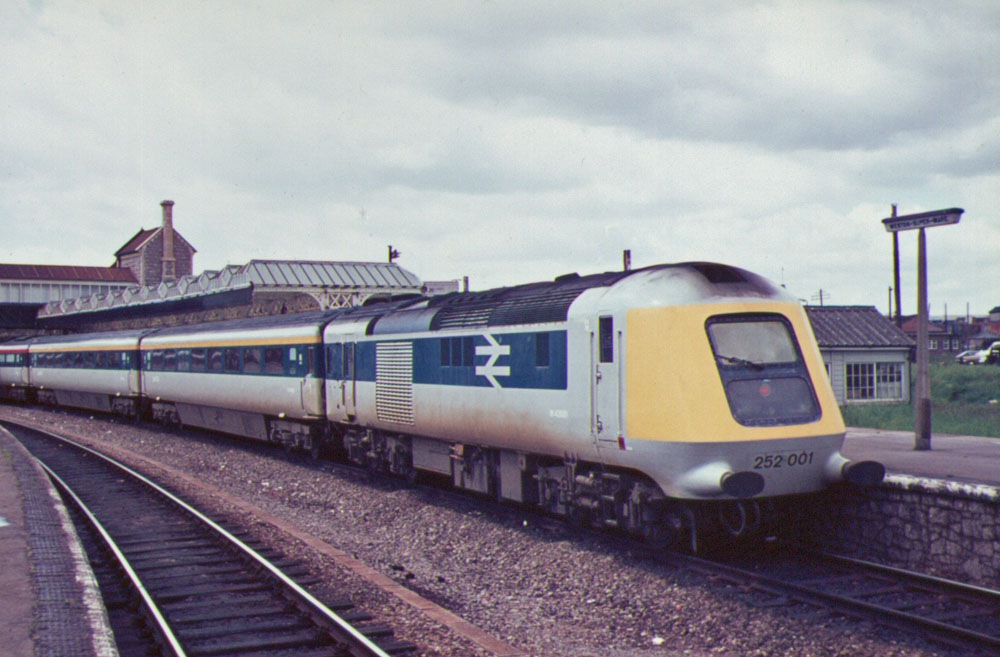
Image source: Wikimedia Commons
The prototype HST power cars, along with their rake of Mk3 coaches, were painted in this fetching, modern blue and grey livery, with full yellow ends.
Inter-City 125 blue and yellow
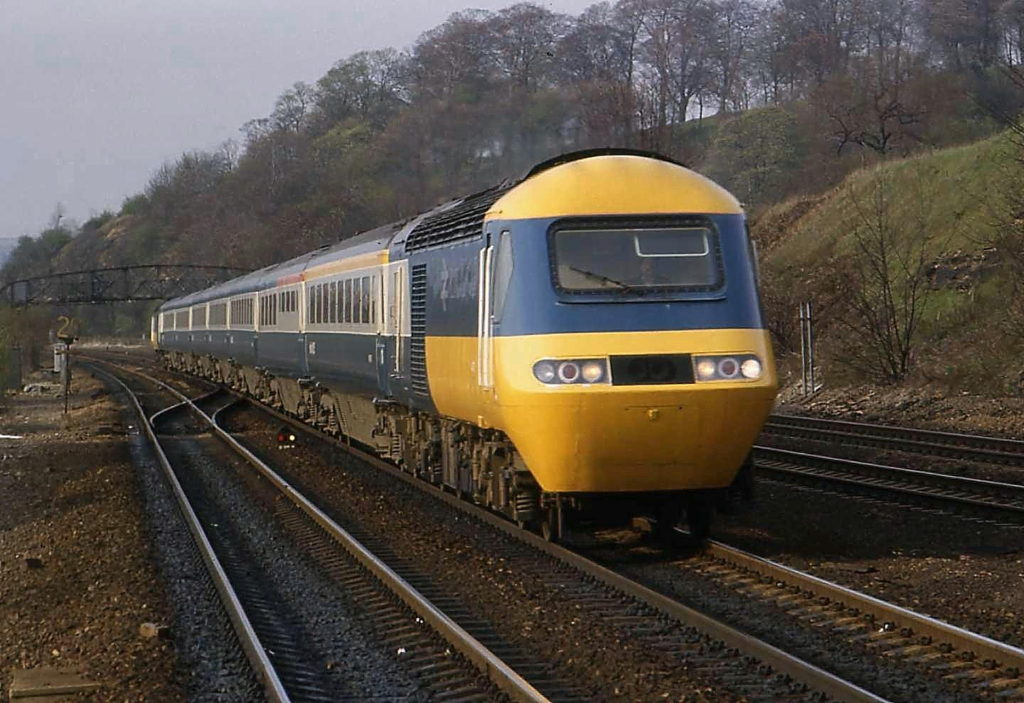
Image source: Wikimedia Commons
The production power cars were first delivered in the Inter-City 125 colour scheme, with yellow wrap-around ends, and this attractive Rail Blue design, cut diagonally with grey towards the back of the loco.
InterCity ‘Executive’ grey and yellow

Image source: Wikimedia Commons
In the 1980s, British Rail refreshed the look of their HST fleet, with the introduction of InterCity ‘Executive’. It took the yellow from its predecessor, with a white, now filled-in logo, set on a dark grey base, complemented with a rake of beige and grey coaches accented with a red stripe.
Intercity ‘Swallow’
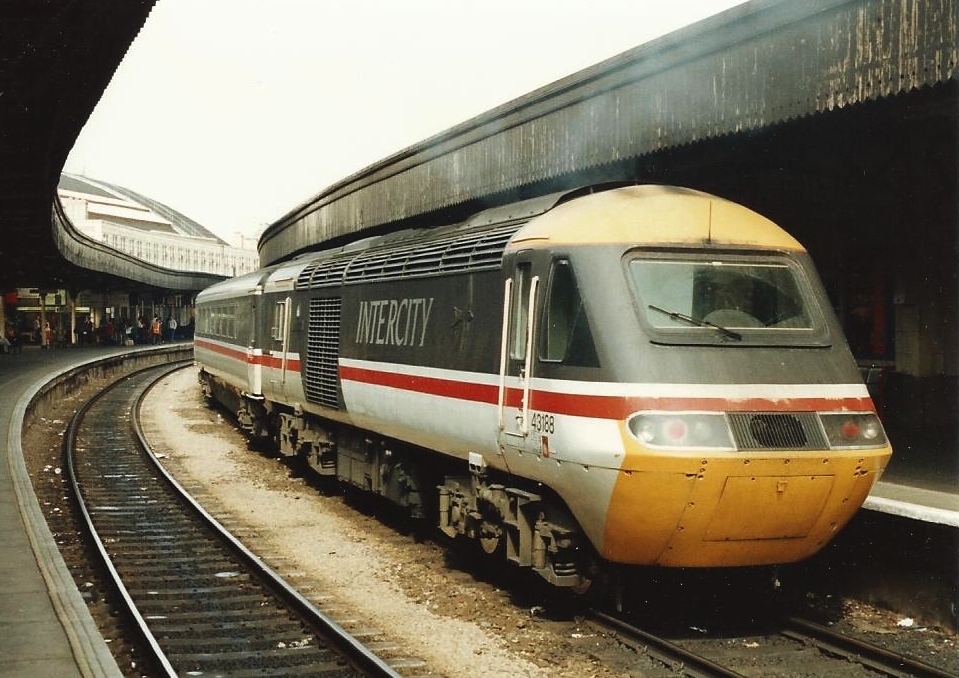
Image source: Hugh Llewelyn on Flickr
In 1987, BR again updated its Intercity brand, with the introduction of the ‘Swallow’. This did away with the yellow altogether, save for the front ends, and brought the red line and white base from the coaches all the way across the loco. And it saw the introduction of that iconic flying swallow logo, too.
Great Western ‘Merlin’
Image source: Wikimedia Commons
Keen to gain a quick identity soon after privatisation, Great Western introduced their green and ivory ‘Merlin’ identity, with 43191 the first power car to receive this bold new colour scheme.
Virgin Cross Country
Image credit: Steve Jones on Flickr
Virgin Trains were also quick to roll out their shiny new branding post-privatisation, with the introduction of this striking red and black livery. Originally, the initials ‘XC’ were applied to the logo, but this was removed fairly swiftly. The yellow front extended all the way up onto the roof, too, but Virgin very quickly found this practically impossible to keep clean, thanks to that gigantic, smoke-spewing Paxman engine.
Midland Mainline
Image credit: Roger Marks on Flickr
The original and deeply attractive Midland Mainline bears all the hallmarks of Ray Stenning at transport design agency Best Impressions. Three curving, orange lines caressed the HST’s curves, sitting on top of a deep teal-green base. Oh, and there was that prancing stag, too. Drool.
First Great Western ‘fag packet’
Image credit: Steve Jones on Flickr
Affectionately christened ‘fag packet’, by 2002 First Great Western had binned their Merlin identity in favour of this green, white and gold colour scheme, resembling a pack of Rothmans cigs.
GNER
Image credit: Hugh Llewelyn on Flickr
Perhaps one of the most attractive liveries, not just on this list, but of all time, is GNER’s navy blue with red stripe. Tastefully applied, always immaculately presented – it is quite simply, timeless. And we miss it dearly.
New Measurement Train
Image credit: Matt Buck on Flickr
A redundant ex-Virgin Trains HST, Network Rail’s ‘Flying Banana’, the New Measurement Train, travels up and down the UK rail network recording data at high-speed. We think it’s fairly obvious how it came by the nickname…
First Great Western ‘Barbie’
Image source: Wikia
First Great Western attempted to graft its corporate bus livery onto the HST fleet in 2003, but it didn’t go well. This was the result.
First Great Western – let’s try that again
Image source: Wikimedia Commons
By 2004, the ‘teardrop’ disaster was over, replaced by this much more toned-down livery with a simple fading pink leaf and gold stripe.
Midland Mainline (2004)
Image credit: Steve Jones on Flickr
By 2004, Midland Mainline had put their prancing stag to the sword, and swapped it out for this endlessly more mundane colour scheme.
Cotswold Rail
Image source: Wikimedia Commons
Cotswold Rail, a former broker and rolling stock spot-hire company, leased two sets of ex-Virgin HST rolling stock during 2006, painted in their allover silver livery.
Hornby
Image source: Wikimedia Commons
In a bizarre turn of events, Cotswold Rail turned one of their HSTs, 43087, into a life-size Hornby model!
First Great Western ‘dynamic lines’
Image credit: S352
Not content with their previous hundred liveries, First Great Western launched yet another livery upon their HST fleet in 2006 – ‘dynamic lines’. It didn’t last very long on the HST power cars at all – little over a year – which is a shame, because it was easily the best of the bunch.
First Great Western purply-blue
Image credit: Matt Buck on Flickr
And as you’ve probably learnt to expect, First Great Western weren’t content with dynamic lines, either, so it was quickly binned, with power cars being painted in this deep, allover purply-blue – in the same year.
National Express East Coast
Image credit: Wikimedia Commons
NXEC’s grip on the East Coast franchise ended in disaster, but not before they’d binned GNER’s attractive navy blue livery in favour of their excruciatingly dull grey and white colour scheme. The Government’s operator, East Coast, adapted this for their own purposes after the National Express franchise collapsed.
East Coast
Image credit: Joshua Brown on Flickr
East Coast did experiment with their own livery, too – as seen here, embellishing 43299.
Grand Central
Image source: Wikimedia Commons
Open-access operator Grand Central ran a small fleet of buffered HSTs on the East Coast Main Line, adorned in this striking black with bright orange stripe colour scheme. Some were painted in plain black, too, but that doesn’t really warrant its own section here. You’ll have to use your imagination.
Arriva Cross Country
Image credit: Wikimedia Commons
As far as HST liveries go, Cross Country’s maroon and silver colour scheme isn’t a bad effort! Their stylised ‘X’ is a nice touch, echoing the pointy nose of the loco.
East Midlands Trains
Image source: Wikimedia Commons
Another Best Impressions creation, East Midlands Trains’ colourful, swooping livery is one of the all-time greats. It’ll be a crying shame when (or indeed, if) East Midland’s HST’s finally hang up their hats for the last time.
Virgin Trains East Coast / LNER
Image source: Wikimedia Commons
And from one Best Impressions creation to another, it’s Virgin Trains East Coast’s devilishly sexy red and silver livery. The way the original light bar is extended and flared across the bodyside in silver is a masterstoke – and those coaches trailing behind, adorned in diagonal-leaning red stripes, are a sight to behold when you see one at full tilt.
GWR green
Image source: ASCOTT-UNDER-WYCHWOOD
You guessed it…it’s yet another HST livery for the Great Western mainline. But you’d have to say, it’s by far the best of the lot – just look at it. Pentagram’s ‘prestigious and straightforward’ visual identity is reflected in the deep green of their HSTs – in fact, it’s an entirely bespoke green, developed especially for GWR and based on the original ‘dark holly green’ used on the first GWR locomotives.
East Midlands Trains – updated
Image credit: Alex S on Flickr
East Midlands Trains introduced this updated livery for their ex-Grand Central buffered HSTs, with a new, deeper blue gradient courtesy of DGDESIGN.
Scotrail Inter7city
Image credit: Scotrail
The first of Scotrail’s Intercity HSTs are now in service, refurbished and presented in this blue and grey livery, also courtesy of DGDESIGN, evoking the skyline of the seven cities of Scotland. Each set has been extensively refurbished, with new sliding doors on the coaches, and more.
LNER / EMR ‘Flying Tomato’
In anticipation of them transferring onto the Midland Mainline for further work with East Midlands Railway, LNER repainted some of its HST sets in plain red during the latter part of 2019, earning them a new nickname – ‘flying tomato’. Nine 8-coach HST sets were planned to move to EMR from LNER.
RailAdventure
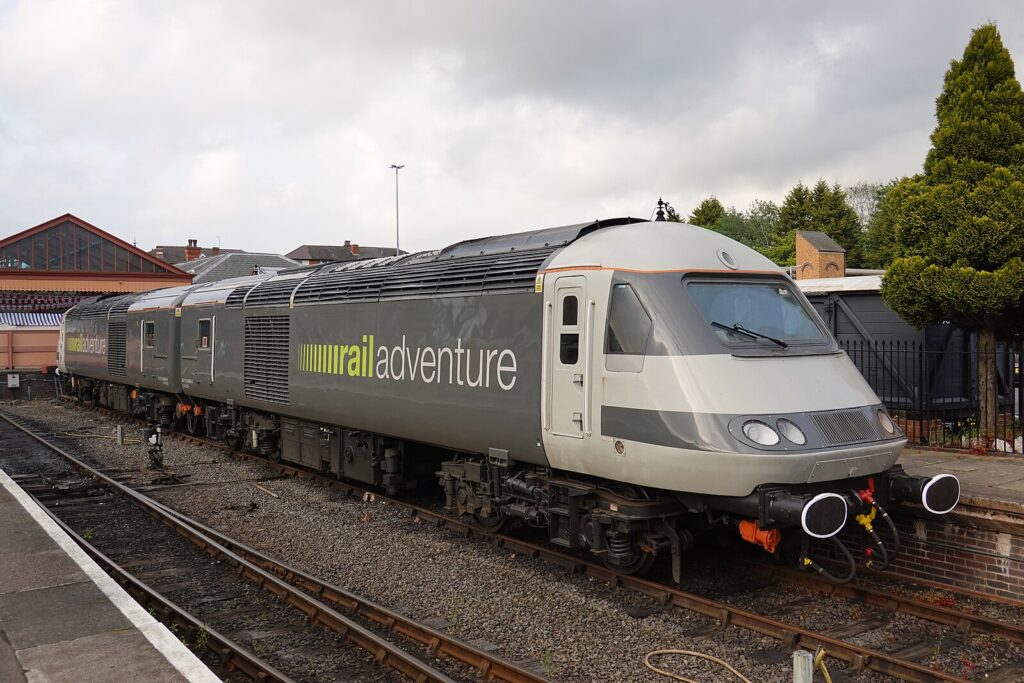
Eight power cars have joined Munich-based RailAdventure for freight duties, mostly running in pairs coupled back to back. They’re often seen delivering new trains to and from the UK, with two pairs at either end of the formation – that’s four power cars to a train! They’re painted in this two-tone grey livery with no yellow ends.
Midland Pullman
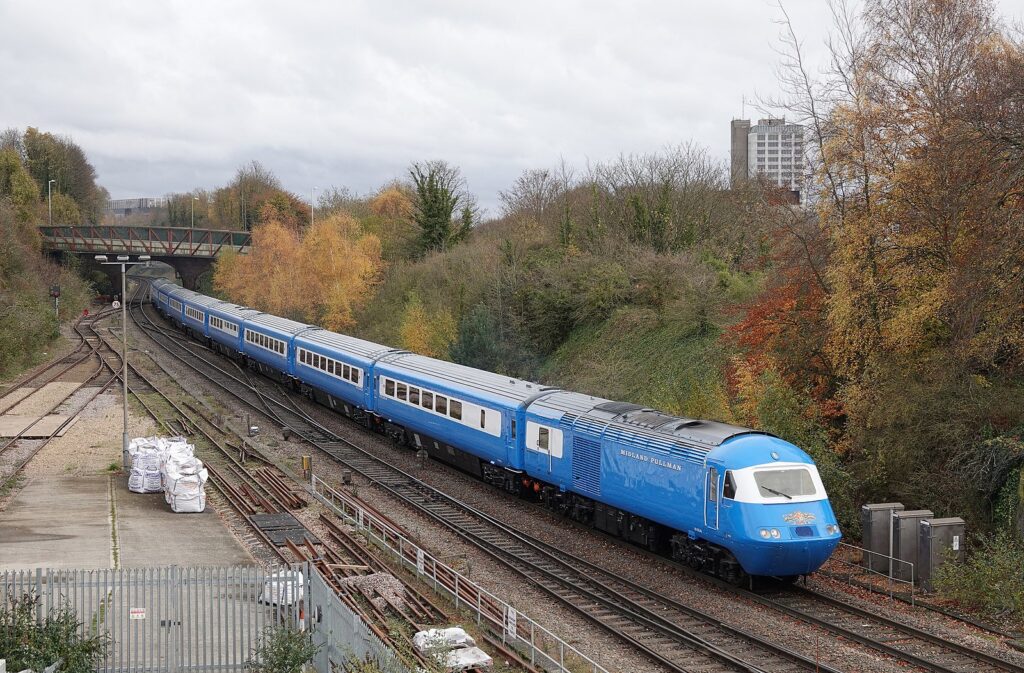
Locomotive Services Limited (LSL) have procured a HST set for their Midland Pullman train, evoking the Blue Pullman experience of the 1960s and early 1970s. Immaculately restored, the blue and white HST set formed of power cars 43055 and 43047 can be found on all manner of railtours up and down the UK, offering a luxury travel and dining experience on board.
Did we miss any?
If you think there’s something missing from this list, let us know! Drop us a message in the comments below, or tweet – @transportdsn.

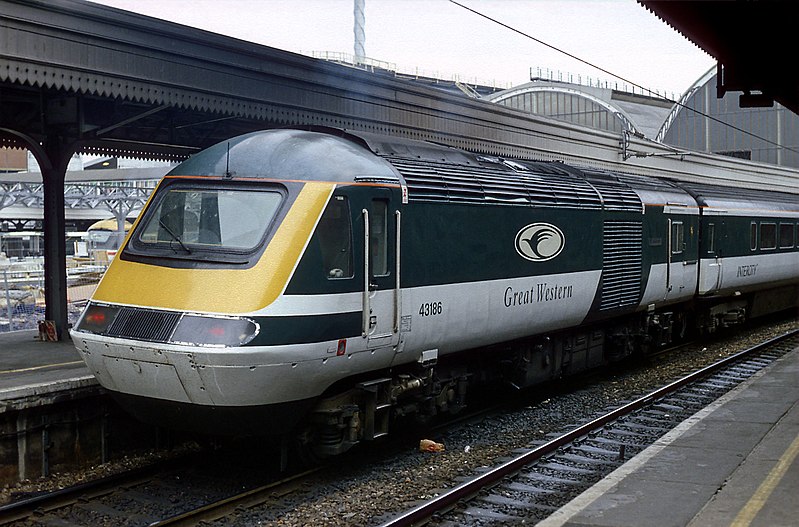
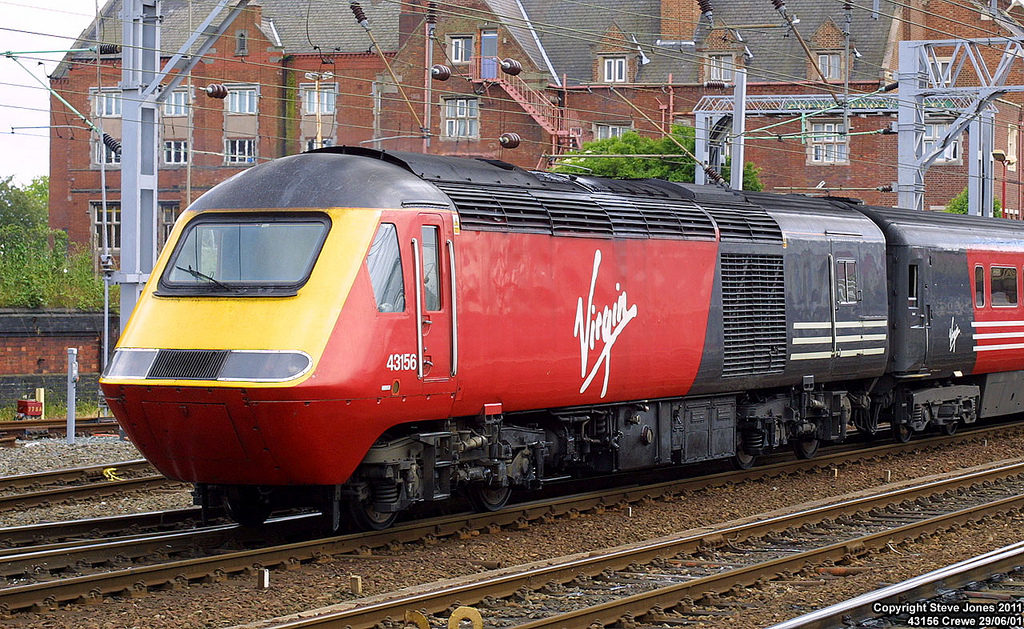
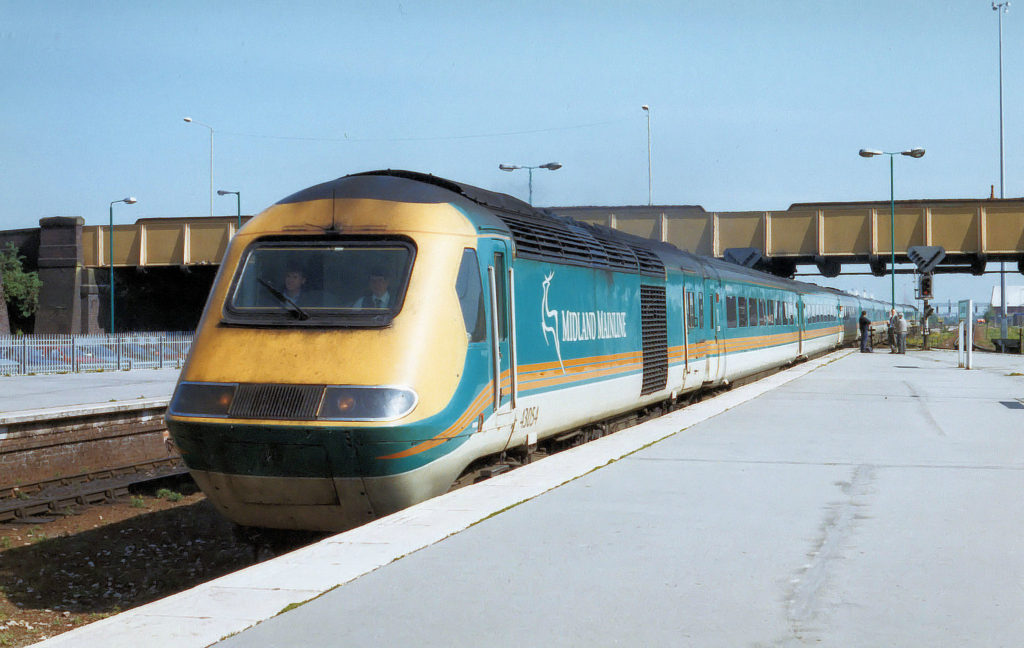
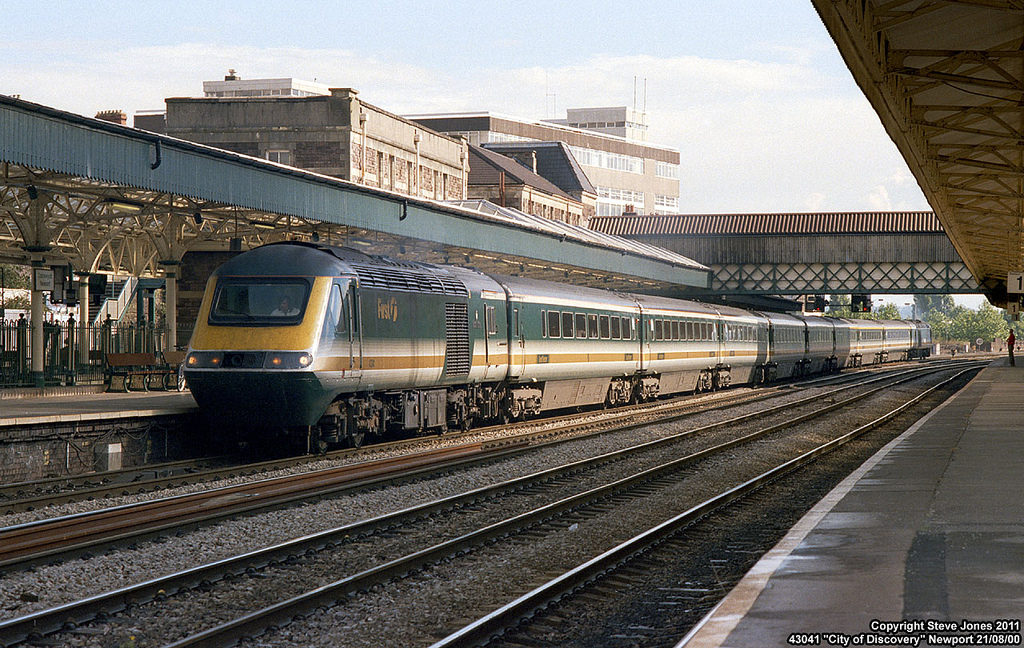
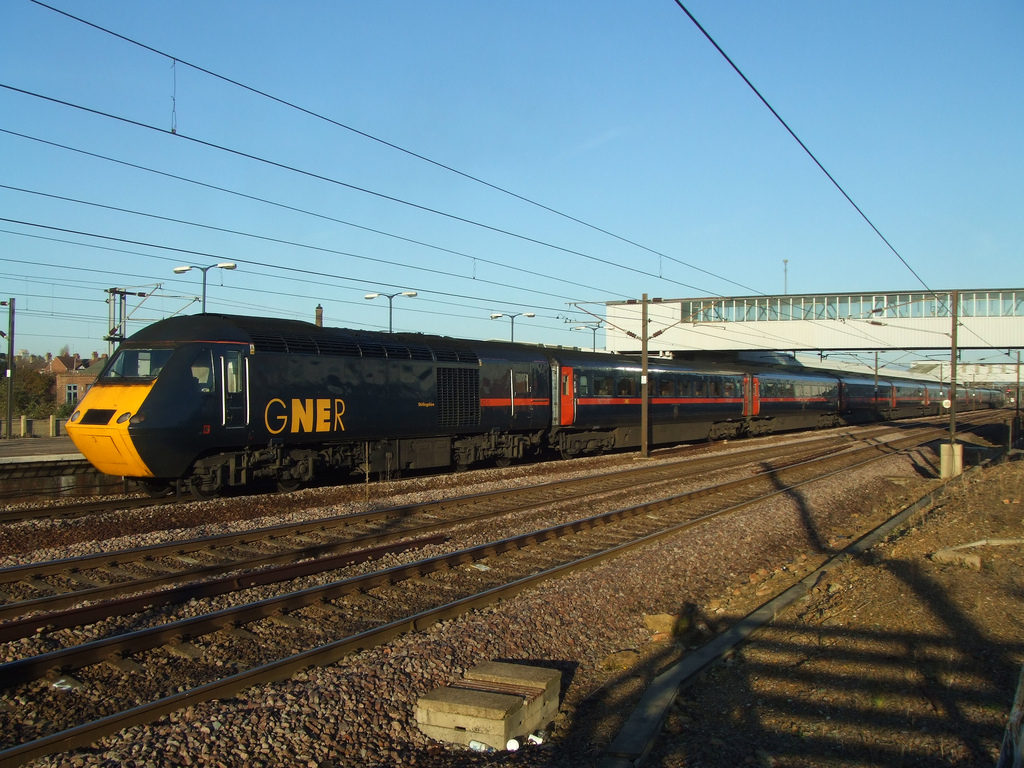
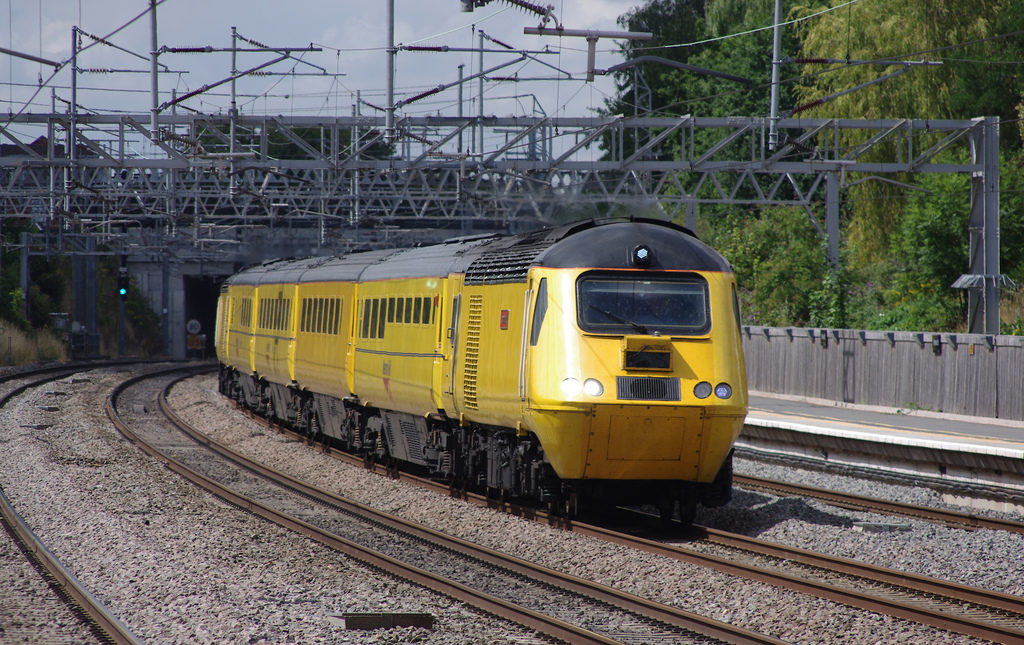
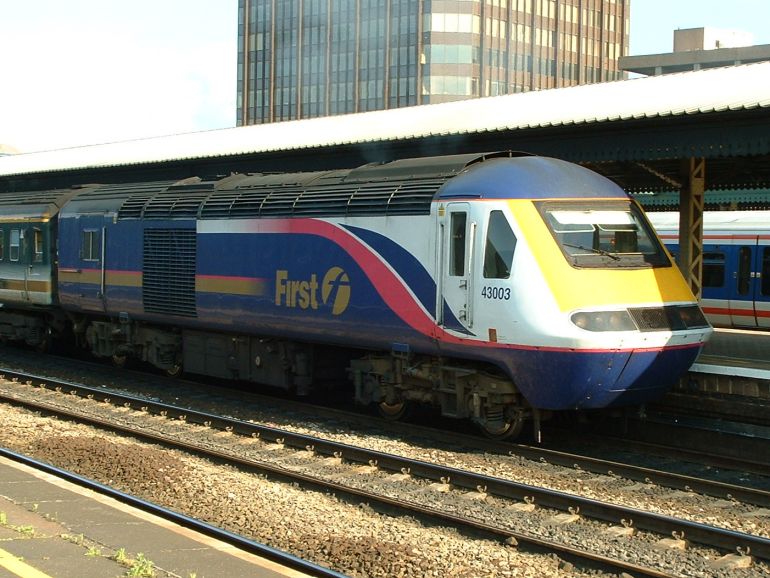
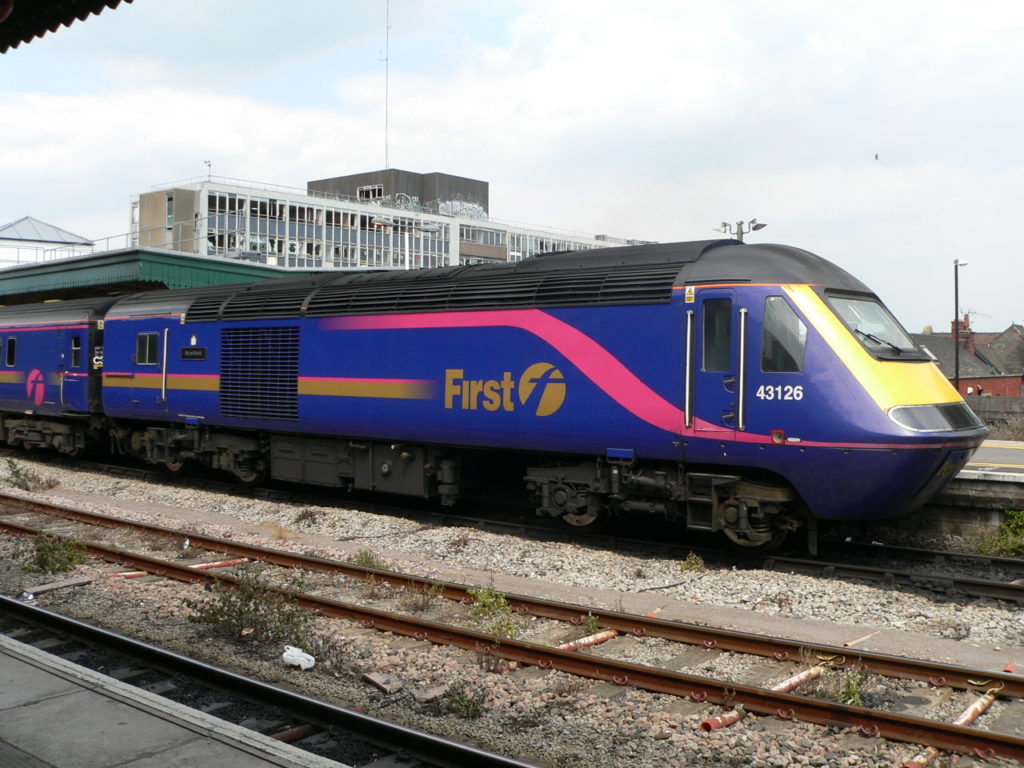
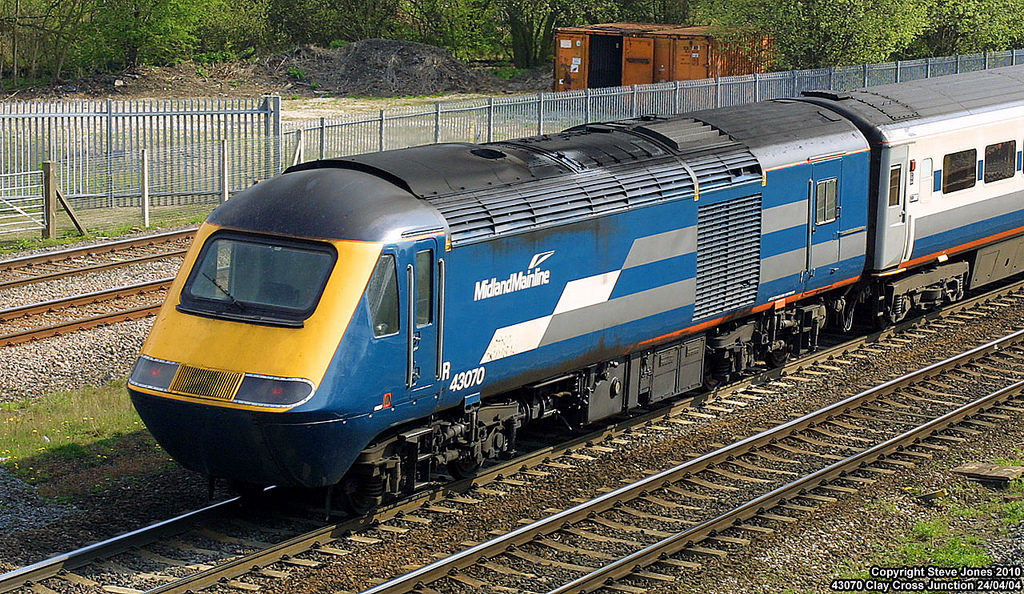
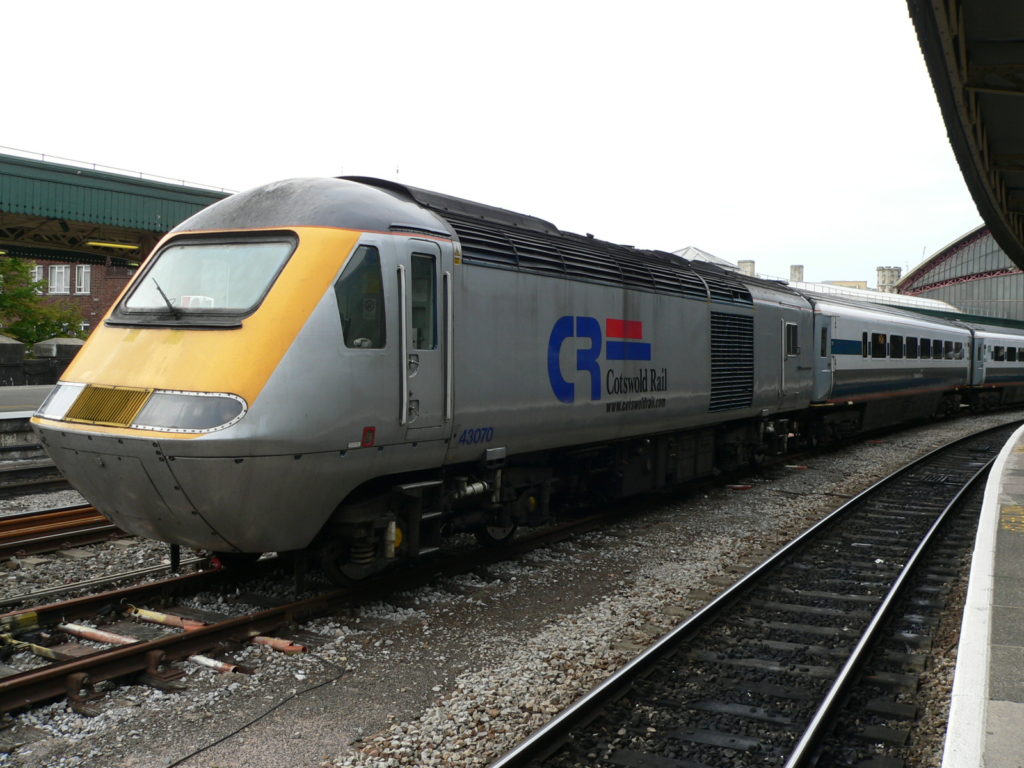
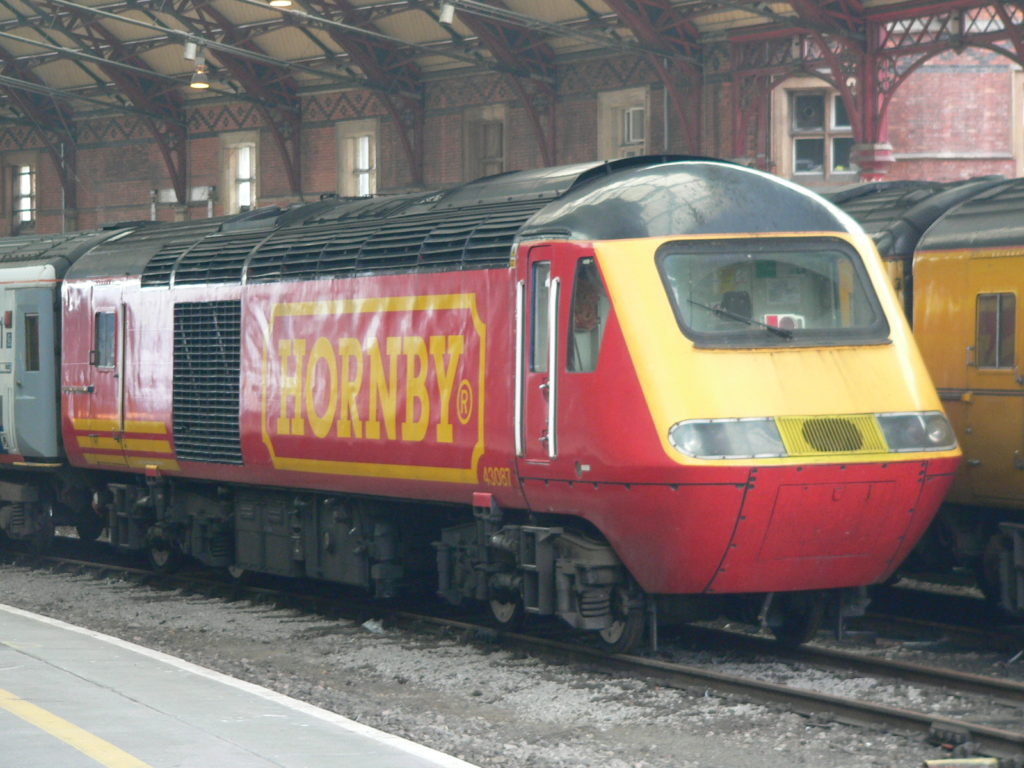
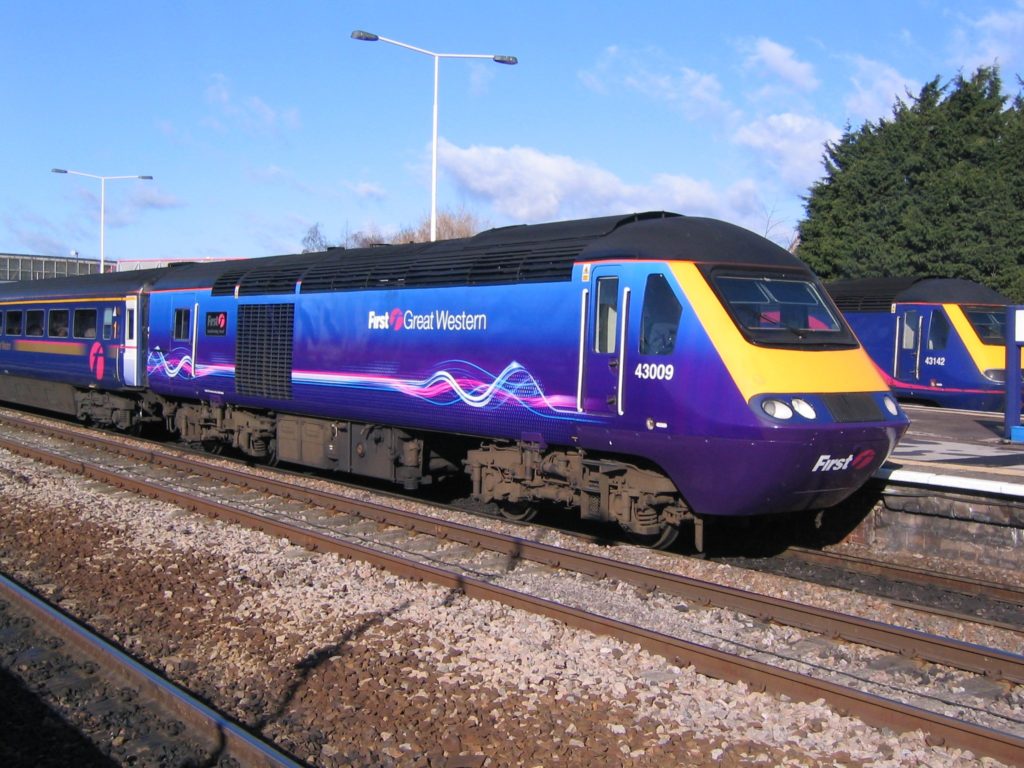
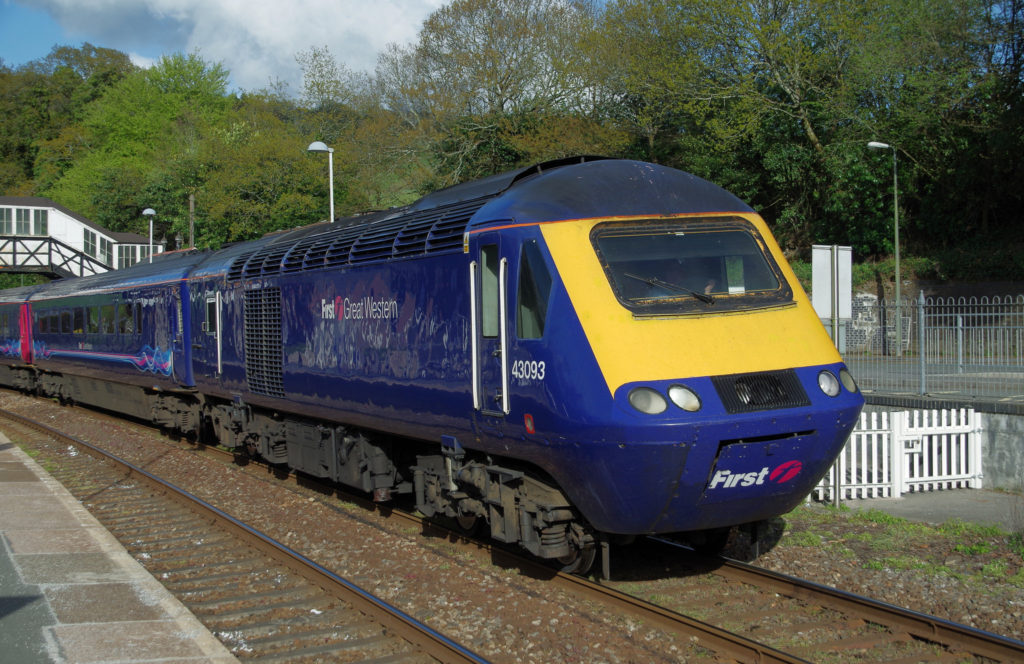
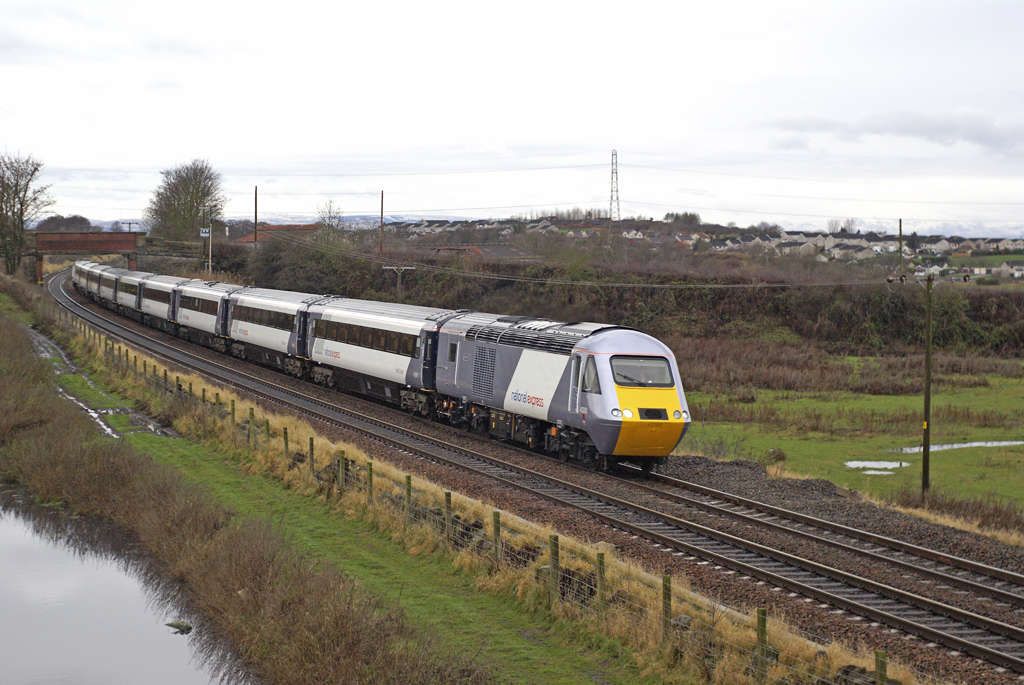
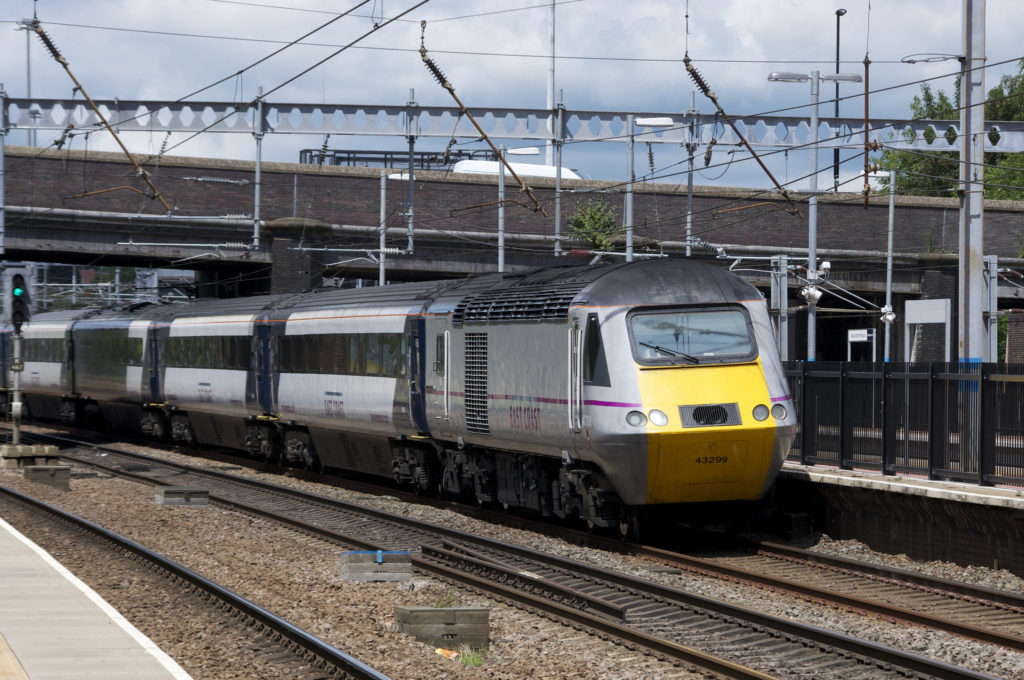
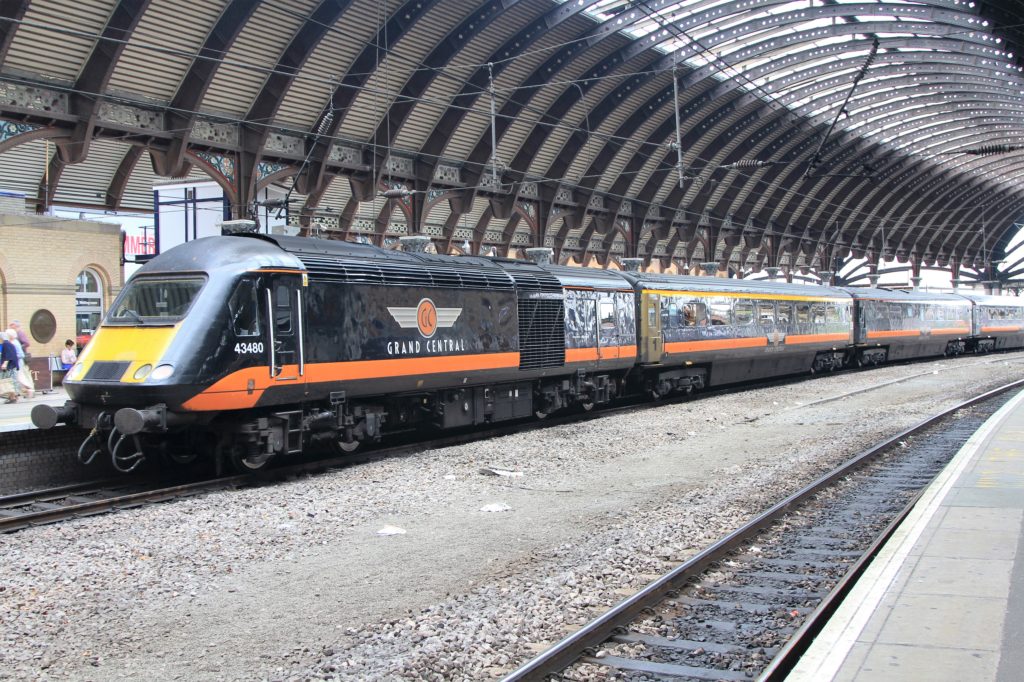
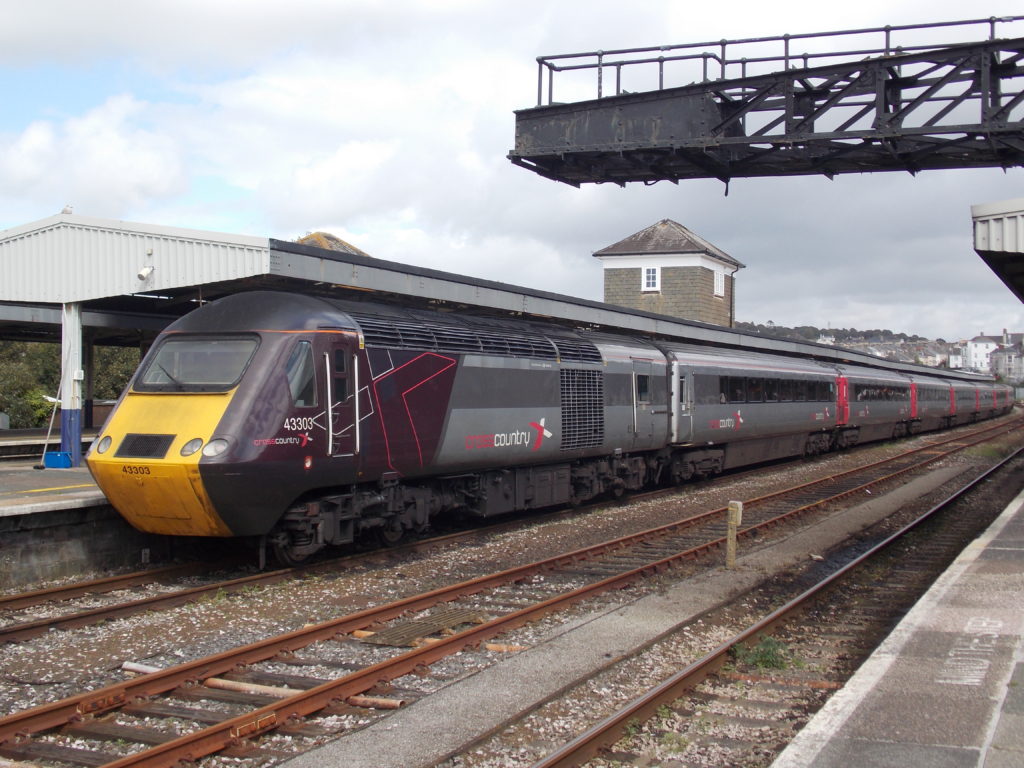
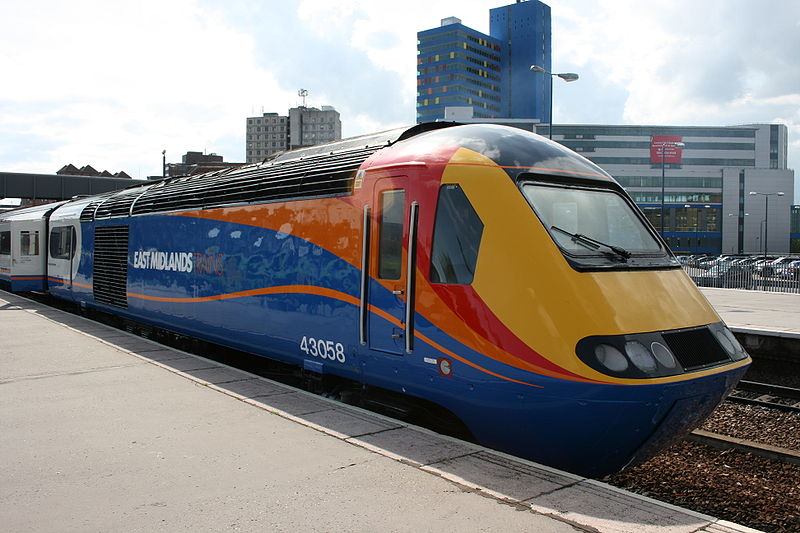
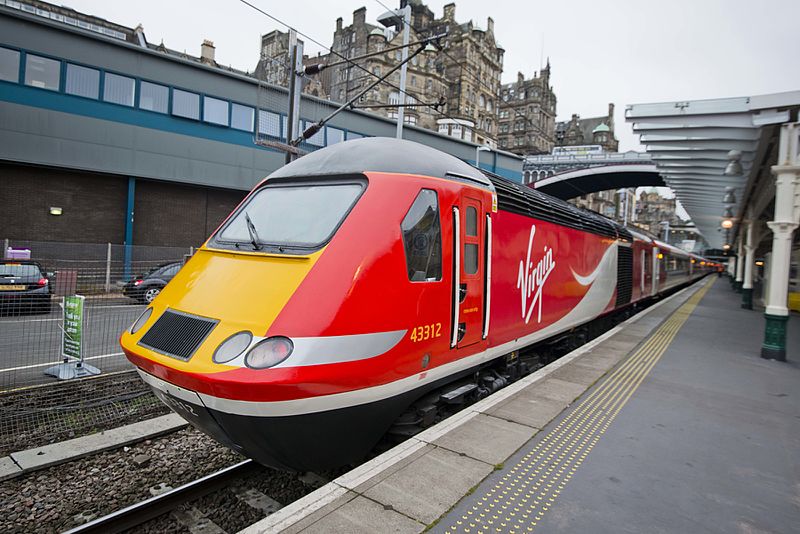
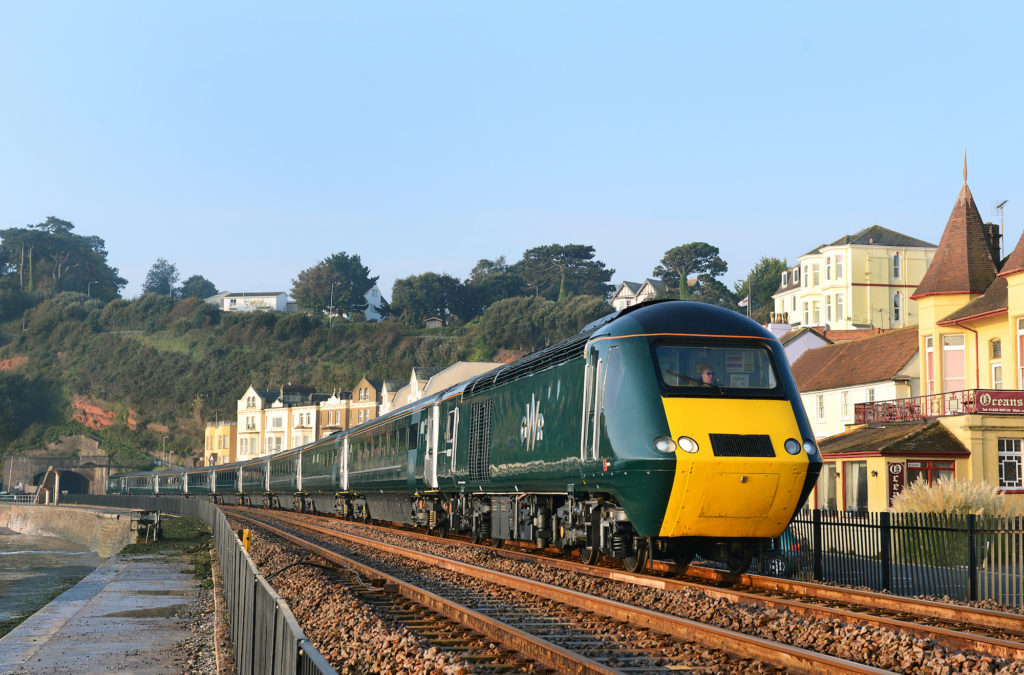
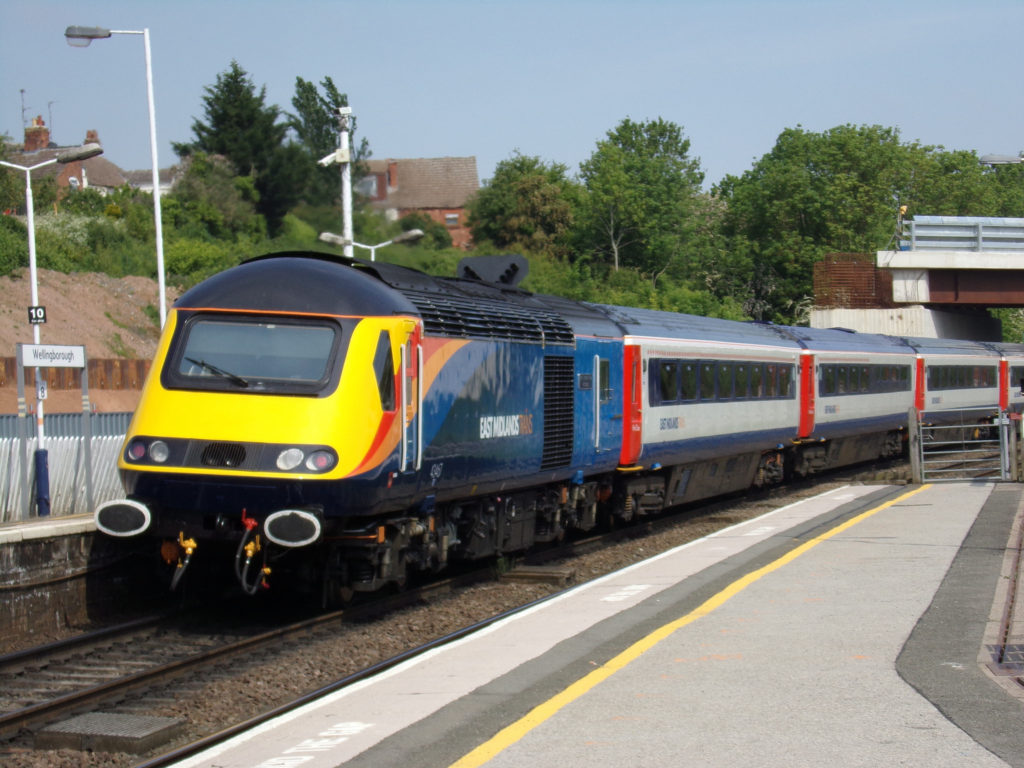
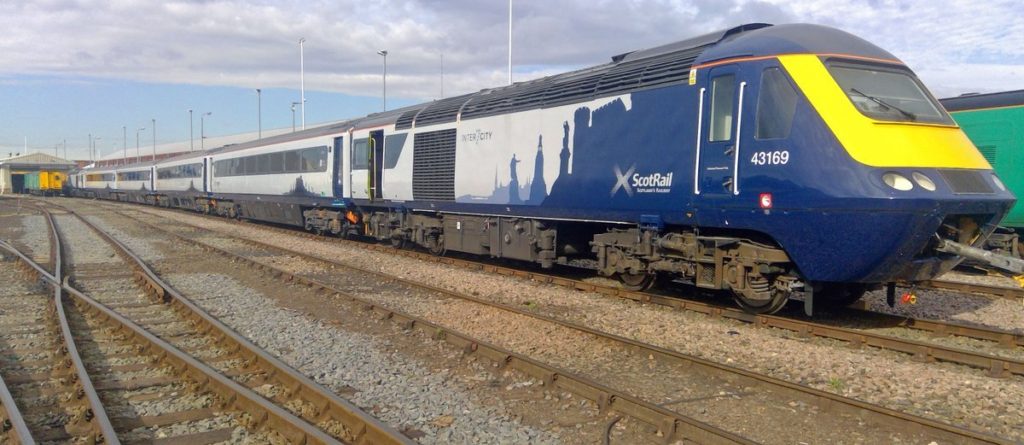
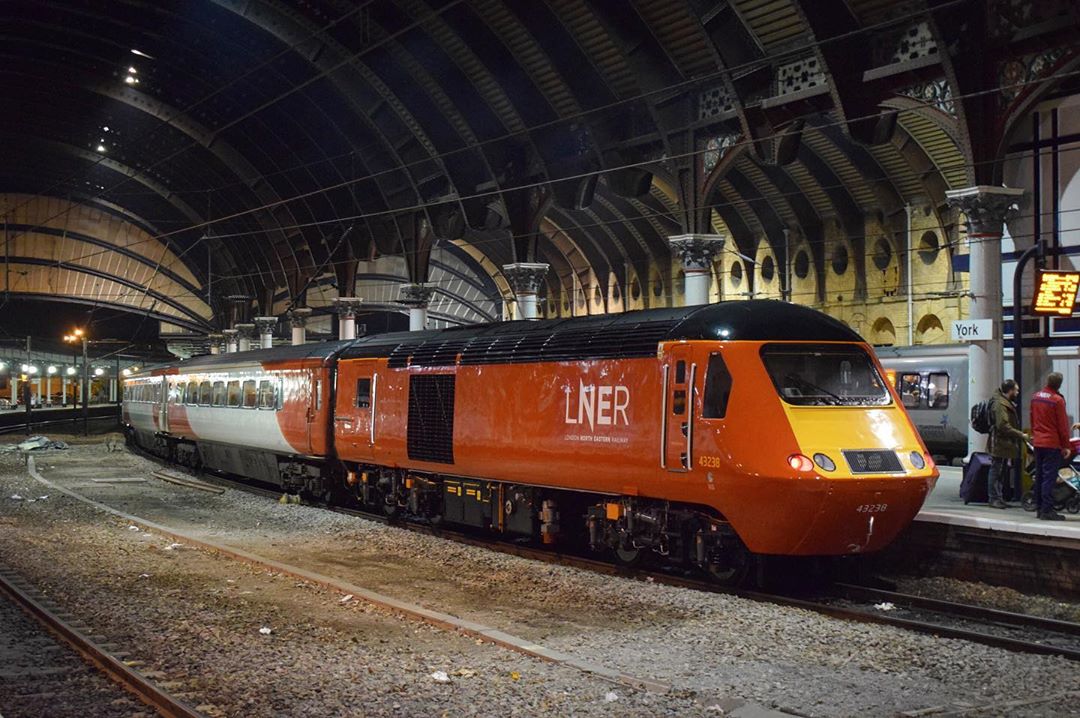
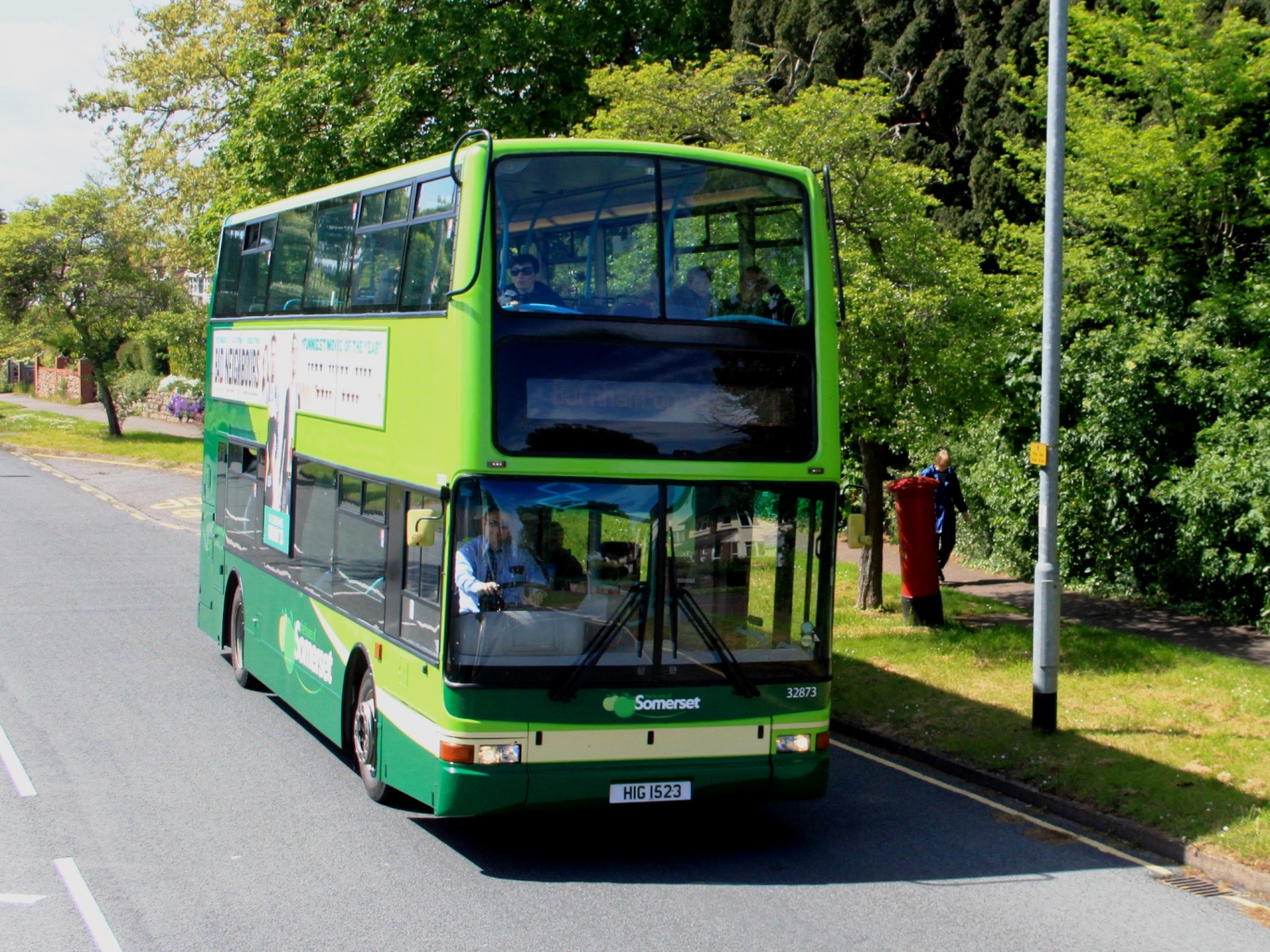
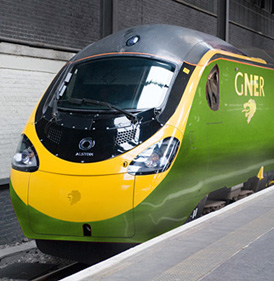
27 Responses
very nice list of liveries, but you did miss one http://www.northwestrailphoto.co.uk/gallery/displayimage.php?album=4&pid=2749#top_display_media
Cheers Mike, we’ve now added this by popular demand! Thanks for the pointer 🙂
East Midlands Trains have ‘updated’ their livery on the power cars with the buffers they acquired from Grand Central. I believe it’s from m360.co.uk . It omits the white on the rear of the power car,and the orange horizontal line on the coaches .
https://www.flickr.com/photos/aswans1234567/43422355102
Certainly does not work as well as the best impressions one. Why change it?
Interesting, thanks John! An update may be required to accommodate this one…!
Hi John, happy to answer the ‘why change it’…
The new EMT livery was by me, here at DGDESIGN. m360 worked on the EMT brand including the ‘train device’. DGDESIGN were commissioned to work on the ‘new’ buffer sets and together with EMT decided to align the exterior livery with the wider brand material. The Best Impressions livery is well loved, so we didn’t throw it out, just evolved the themes. So the colours and ‘swooshes’ are new, the gradient fade is new, and the carriages are simplified. The trains had very short access to the paint-shop, which limited the number of processes/layers we could do, so much is done with vinyls, which in-turn enabled the gradient fade which looks so good.
Cheers
Andy
the only missing one I can see is the experimental livery applied to 43002 as built at Crewe, understandable as it never carried it in revenue earning service
I was an apprentice at Crewe works at the same time and the first few up to 43006 were definitely painted the same when built but repainted before leaving the works – the first one I recall seeing leaving the works with the blue banded end was 43008 coupled to another seen from my classroom in the works training school as it passed the Crewe Works train platform alongside the electric depot in late autumn 1975 – I also remember our instructor..possibly titled chief instructor..Mr Shilton saying he thought the change to the blue band was the right decision and thinking that I agreed with him..
LNER’s livery is basically the Virgin East Coast one with a new logo, so might not warrant a separate pic.
Virgin’s earlier lot of HST acquisitions also worked North Wales services out of Euston, which might partly explain the disappearance of the XC lettering as they could be used on any old diagram and not just Cross Country.
At least two official liveries missing (excluding promotional wraps, of which there are loads). Both can be seen on http://www.tauntontrains.co.uk/oldsite/HST.htm (I have no connection with this page). Look for 43063 in Virgin CrossCountry with yellow cab roof (the launch variant, until it was decided it got too dirty). Also 43130 in First Great Western blue with white swirls on the cab side (a mid-way step between large white area and no white).
Absolutely! We made reference to these in the post, but probably don’t warrant a section of their own.
OK, but both were the official corporate colour (even if short-lived), rather than, for example, an unofficial variation.
A variant rather than a different livery, arguably, but I always liked the (wholly impractical) white-roofed 43038. But then again, I didn’t have to try to keep it clean!
I imagine trying to keep ANY HST livery clean, regardless of colour is a never-ending task!
You really should include the “plain black” (with gold and silver doors) Grand Central livery. It was the last livery carried by the Valenta-engined power cars (they were repainted to “orange stripe” when fitted with MTUs), so is how most of us remember them. The horizontal small yellow warning panels were also unique in hst history, and made the front ends look very different.
Scotrail attempted this livery when they first acquired HSTs. https://www.flickr.com/photos/derekh64/36352102693
I believe this was a purely promotional livery leading up to the actual Inter 7 Cities Livery
Yes, you technically did miss one Virgin trains XC https://gyazo.com/733dec922f7dae92808456910195b170
Australian livery/ies?
Thought the pre production models were just plain grey?
The LNER livery and plain Red LNER livery and NRM livery is missing off the list lol
Missed this 1
https://www.pinterest.ca/pin/696369161104819304/
There was also the crossover livery when the GNER red stripe was replaced with a white stripe in the early national express days.
There was also another earlier GNER livery. The letters GNER were initially white, then later gold, as in your picture.
4.5
New Pullman will be a good addition here!
1.5
Hi Matt. This may have been mentioned, but there was a period of time when National Express carried the ex-GNER colours with a white stripe. Here is a photo https://live.staticflickr.com/7250/27768507565_ca898e344f_b.jpg